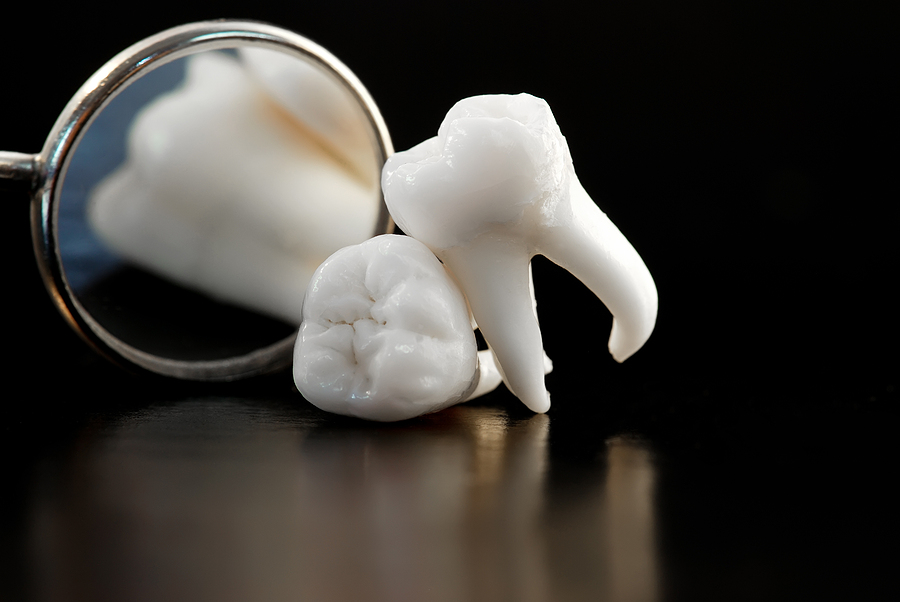Wisdom Tooth Extraction: How It’s Done

Wisdom Tooth Extraction: How It’s Done
Wisdom teeth are the final set of teeth that grown in at the back of your mouth. They usually appear by the time you reach 20 years old. These teeth can be a valuable set of assets when they grow in properly, but they will cause pain and discomfort if they do not. Poorly aligned wisdom teeth may grow horizontally or at an angle and put pressure on the other teeth as well as soft tissue and nerves. Wisdom teeth that grow in this manner need to be removed.
A dentist will decide if a person's wisdom teeth need to be removed. Dentists prefer to perform the procedure before the teeth can become a problem. The procedure is simple and involves three primary steps.
1. Anesthesia
Wisdom tooth removal is an invasive procedure. The dentist will need to cut into the patient's gums and break apart bone; therefore, the patient will need an injection of strong local anesthetic in order to numb the area. This injection will probably be the only painful part of the procedure.
Wisdom tooth extraction can be an uncomfortable experience. The pain and discomfort are psychosomatic more than anything else; therefore, the dentist may use a sedative injection in order to keep the patient calm. Some patients are able to continue without the need for a sedative. A general anesthetic is rarely used during wisdom tooth extraction.
2. Extraction
The extraction procedure will depend on whether the tooth has crowned or not. If it has not crowned yet, an incision will be made in the gum in order to access it. Some pieces of bone may also be removed.
The tooth may have to be cut up into small pieces in order to get it out through the small opening. A smaller incision will be required if the tooth is already poking out through the gum. The dentist will need to rock the tooth back and forth within the socket in order to get it loose, so patients can expect to feel some pressure. The procedure should be painless, and the surgeon can inject more anesthetics if needed.
How long the procedure takes varies from patient to patient. 30 minutes is the average.
3. Recovery
Wisdom tooth extraction is an outpatient procedure, and the patient should be able to go home immediately after. The dentist will use dissolving stitches to patch up any incisions that were made, and they should take up to ten days to dissolve. The area will be sore during this period.
The dentist may apply gauze over the extraction site and ask the patient to bite down for an hour. This technique allows the blood to clot properly over the empty socket. Antibiotics may be prescribed to deal with any infections.
A few things patients should avoid during the first 24 hours after the procedure include:
- Rinsing the mouth
- Alcoholic beverages and smoking
- Drinking hot or cold liquids
- Strenuous activity
A patient will require up to two weeks to fully recover from a wisdom tooth extraction. During this time, there will be visible swelling, pain and a stiff jaw. Any cases of excessive pain or bleeding should be reported to the dentist immediately.
Contact one of our dentists to learn more about wisdom tooth extractions.
For more information or to schedule an appointment with Advanced Dentistry Of Walnut Creek, request an appointment in our Walnut Creek dental office here: https://www.dentistrywalnutcreek.com. Or call us at (925) 937-2273.

Contact Us
Working Hours
- MONClosed
- TUE - THU8:30 am - 5:00 pm
- FRI8:30 am - 2:00 pm
- SAT - SUNClosed





comments